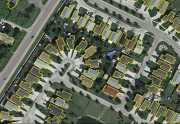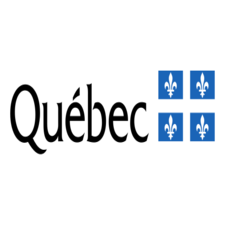LiDAR
Type of resources
Available actions
Topics
Keywords
Contact for the resource
Provided by
Years
Formats
Representation types
Update frequencies
status
Service types
-

“Automatically Extracted Buildings” is a raw digital product in vector format created by NRCan. It consists of a single topographical feature class that delineates polygonal building footprints automatically extracted from airborne Lidar data, high-resolution optical imagery or other sources.
-

The LiDAR Point Clouds is a product that is part of the CanElevation Series created to support the National Elevation Data Strategy implemented by NRCan. This product contains point clouds from various airborne LiDAR acquisition projects conducted in Canada. These airborne LiDAR acquisition projects may have been conducted by NRCan or by various partners. The LiDAR point cloud data is licensed under an open government license and has been incorporated into the National Elevation Data Strategy. Point cloud files are distributed by LiDAR acquisition project without integration between projects. The point cloud files are distributed using the compressed .LAZ / Cloud Optimized Point Cloud (COPC) format. The COPC open format is an octree reorganization of the data inside a .LAZ 1.4 file. It allows efficient use and visualization rendering via HTTP calls (e.g. via the web), while offering the capabilities specific to the compressed .LAZ format which is already well established in the industry. Point cloud files are therefore both downloadable for local use and viewable via URL links from a cloud computing environment. The reference system used for all point clouds in the product is NAD83(CSRS), epoch 2010. The projection used is the UTM projection with the corresponding zone. Elevations are orthometric and expressed in reference to the Canadian Geodetic Vertical Datum of 2013 (CGVD2013).
-
Matrix of slopes in degrees produced from mosaics of images of digital terrain models from different years according to sectors (2008 to 2020)**This third party metadata element was translated using an automated translation tool (Amazon Translate).**
-
The National Elevation Strategy, led by Natural Resources Canada, aims to increase high-resolution elevation data coverage for Canada and improve accessibility to the products. In the southern part of the country, Digital Elevation Models (DEMs) and derived data (e.g. shaded relief, slope, etc.) are generated from airborne LiDAR data. They cover an area of 20 km by 20 km at a 2 m resolution. In the northern part of the country, DEMs are derived from autocorrelation of high resolution optical satellite images. They cover an area of 50 km by 50 km at a 2 m resolution. This web service represents the current state of the available zones and is updated as new areas become available.
-
La Stratégie nationale d’élévation, dirigée par Ressources naturelles Canada, vise à accroître la couverture du Canada en données d’élévation de haute résolution et à augmenter l’accessibilité des produits. Au sud du pays, les modèles numériques d'élévation (MNE) et des données dérivées (e.g. Relief ombré, pente, etc.) sont produits à partir des données LiDAR aéroporté. Ils couvrent une zone de 20 km X 20 km à une résolution de 2 m. Au nord du pays, des MNEs sont surtout générés à partir d’autocorrélation d’images satellitaires optiques à haute résolution. Ils couvrent une zone de 50 km X 50 km à une résolution de 2 m. Ce service web représente l'état actuel des zones offertes et est mis à jour au fur et à mesure que de nouvelles zones sontt disponibles.
-

The purpose of this dataset is to show end users where LiDAR data has been acquired by the Government of Manitoba. LiDAR (Light Detection and Ranging) is a remote sensing technology that uses lasers to collect accurate, continuous elevation data over relatively large areas. These data are essential for activities such as forestry, flood risk management, land use planning, and natural resources management. The Manitoba Government is increasingly acquiring LiDAR data across the province.This layer was created on August 5, 2009 by Manitoba Sustainable Development and was updated on August 9, 2021.To download LiDAR data from the Manitoba Land Initiative (MLI) site, follow this link: https://mli2.gov.mb.ca/dems/index_external_lidar.html Fields included ( Alias (Field Name): Field description.) ObjectID (OBJECTID) - Automatically generated feature numberAcquired (ACQUIRED) - LiDAR data capture dateContractor (CONTRACTOR) - Contractor nameContributor (CONTRIB) - Manitoba Government departmentName (NAME) - Dataset nameCellsize (CELLSIZE) - Raster DEM cell sizeMLI (MLI) - Data available for download on the Manitoba Land Initiative site
-

__The link: * Access the data directory* is available in the section*Dataset description sheets; Additional information*__. As part of the provincial LiDAR sensor data acquisition project, a topographic humidity index or *Topographic Wetness Index* (TWI) was produced from the digital terrain model derived from aerial LiDAR (*Light Detection and Ranging*). The matrix layers thus produced provide information on the potential for water accumulation on the territory as a function of the slope and accumulation at a given pixel.**This third party metadata element was translated using an automated translation tool (Amazon Translate).**
-

__LiDAR__ (__Li__ght __D__etection __A__nd __R__anging) is a modern survey method that produces three-dimensional spatial information in the form of a data point cloud. LiDAR is an active remote sensing system; it produces its own energy to acquire information, versus passive systems, like cameras, that only receive energy. LiDAR systems are made up of a scanner, which is a laser transmitter and receiver; a GNSS (GPS) receiver; and an inertial navigation system (INS). These instruments are mounted to an aircraft. The laser scanner transmits near-infrared light to the ground. The light reflects off the ground and returns to the scanner. The scanner measures the time interval and intensity of the reflected signals. This information is integrated with the positional information provided by the GNSS and INS to create a three-dimensional point cloud representing the surface. A LiDAR system can record millions of points per second, resulting in high spatial resolution, which allows for differentiation of many fine terrain features. Point clouds collected with LiDAR can be used to create three-dimensional representations of the Earth’s surface, such as Digital Elevation Models (DEMs) and Digital Surface Models (DSMs). DEMs model the elevation of the ground without objects on the surface, and DSMs model ground elevations as well as surface objects such as trees and buildings. LidarBC's **Open LiDAR Data Portal** (see link under Resources) is an initiative to provide **open** public access to LiDAR and associated datasets collected by the Government of British Columbia. The data in the portal is released as Open Data under the [**Open Government Licence – British Columbia**](https://www2.gov.bc.ca/gov/content/data/open-data/open-government-licence-bc) (OGL-BC). Four Government of British Columbia business areas and one department of the Government of Canada make LiDAR data available through the portal: * [**GeoBC**](https://www2.gov.bc.ca/gov/content/data/about-data-management/geobc) * [**Emergency Management and Climate Readiness**](https://www2.gov.bc.ca/gov/content/safety/emergency-management) (EMCR) * [**BC Timber Sales**](https://www2.gov.bc.ca/gov/content/industry/forestry/bc-timber-sales) (BCTS) * [**Forest Analysis and Inventory Branch**](https://www2.gov.bc.ca/gov/content/industry/forestry/managing-our-forest-resources/forest-inventory) (FAIB) * [**Natural Resources Canada**](https://www.nrcan.gc.ca/home) (NRCan) GeoBC is the provincial branch that oversees and manages LidarBC’s Open LiDAR Data Portal, including storage, distribution, maintenance, and updates. Please direct questions to **LiDAR@gov.bc.ca**.
-

__The link: * Access the data directory* is available in the section*Dataset description sheets; Additional information*__. Hydrographic derivatives from LiDAR (Light Detection and Ranging) were produced as part of the provincial LiDAR sensor data acquisition project. These products provide information on the geographical position of water flow beds on the territory as well as their nature (permanent or intermittent watercourse). These layers represent the path that water should take depending on the topography. It is therefore a potential flow bed that does not take into account the nature of the surface deposit or underground pipes. These vector layers are preliminary and do not replace reference hydrographic layers such as the Quebec Hydrographic Network Geobase (GRHQ). They are primarily used to support forest operations. These layers will also be improved over the coming years thanks to a collective effort by two ministries, namely the Ministry of Natural Resources and Forests (MRNF) and the Ministry of the Environment, the Fight against Climate Change, and Wildlife and Parks (MELCCFP). Data on potential flow beds are distributed, as of March 2022, by water drainage unit (UDH), a division that respects the natural boundaries of the watershed. This division uses the same codes and approximately the same spatial limits of the UDHs of the GRHQ. Data for each UDH is available in Geodatabase (GDB) or GeoPackage (GPKG) format.**This third party metadata element was translated using an automated translation tool (Amazon Translate).**
-

The High Resolution Digital Elevation Model (HRDEM) product is derived from airborne LiDAR data (mainly in the south) and satellite images in the north. The complete coverage of the Canadian territory is gradually being established. It includes a Digital Terrain Model (DTM), a Digital Surface Model (DSM) and other derived data. For DTM datasets, derived data available are slope, aspect, shaded relief, color relief and color shaded relief maps and for DSM datasets, derived data available are shaded relief, color relief and color shaded relief maps. The productive forest line is used to separate the northern and the southern parts of the country. This line is approximate and may change based on requirements. In the southern part of the country (south of the productive forest line), DTM and DSM datasets are generated from airborne LiDAR data. They are offered at a 1 m or 2 m resolution and projected to the UTM NAD83 (CSRS) coordinate system and the corresponding zones. The datasets at a 1 m resolution cover an area of 10 km x 10 km while datasets at a 2 m resolution cover an area of 20 km by 20 km. In the northern part of the country (north of the productive forest line), due to the low density of vegetation and infrastructure, only DSM datasets are generally generated. Most of these datasets have optical digital images as their source data. They are generated at a 2 m resolution using the Polar Stereographic North coordinate system referenced to WGS84 horizontal datum or UTM NAD83 (CSRS) coordinate system. Each dataset covers an area of 50 km by 50 km. For some locations in the north, DSM and DTM datasets can also be generated from airborne LiDAR data. In this case, these products will be generated with the same specifications as those generated from airborne LiDAR in the southern part of the country. The HRDEM product is referenced to the Canadian Geodetic Vertical Datum of 2013 (CGVD2013), which is now the reference standard for heights across Canada. Source data for HRDEM datasets is acquired through multiple projects with different partners. Since data is being acquired by project, there is no integration or edgematching done between projects. The tiles are aligned within each project. The product High Resolution Digital Elevation Model (HRDEM) is part of the CanElevation Series created in support to the National Elevation Data Strategy implemented by NRCan. Collaboration is a key factor to the success of the National Elevation Data Strategy. Refer to the “Supporting Document” section to access the list of the different partners including links to their respective data.
 Arctic SDI catalogue
Arctic SDI catalogue
